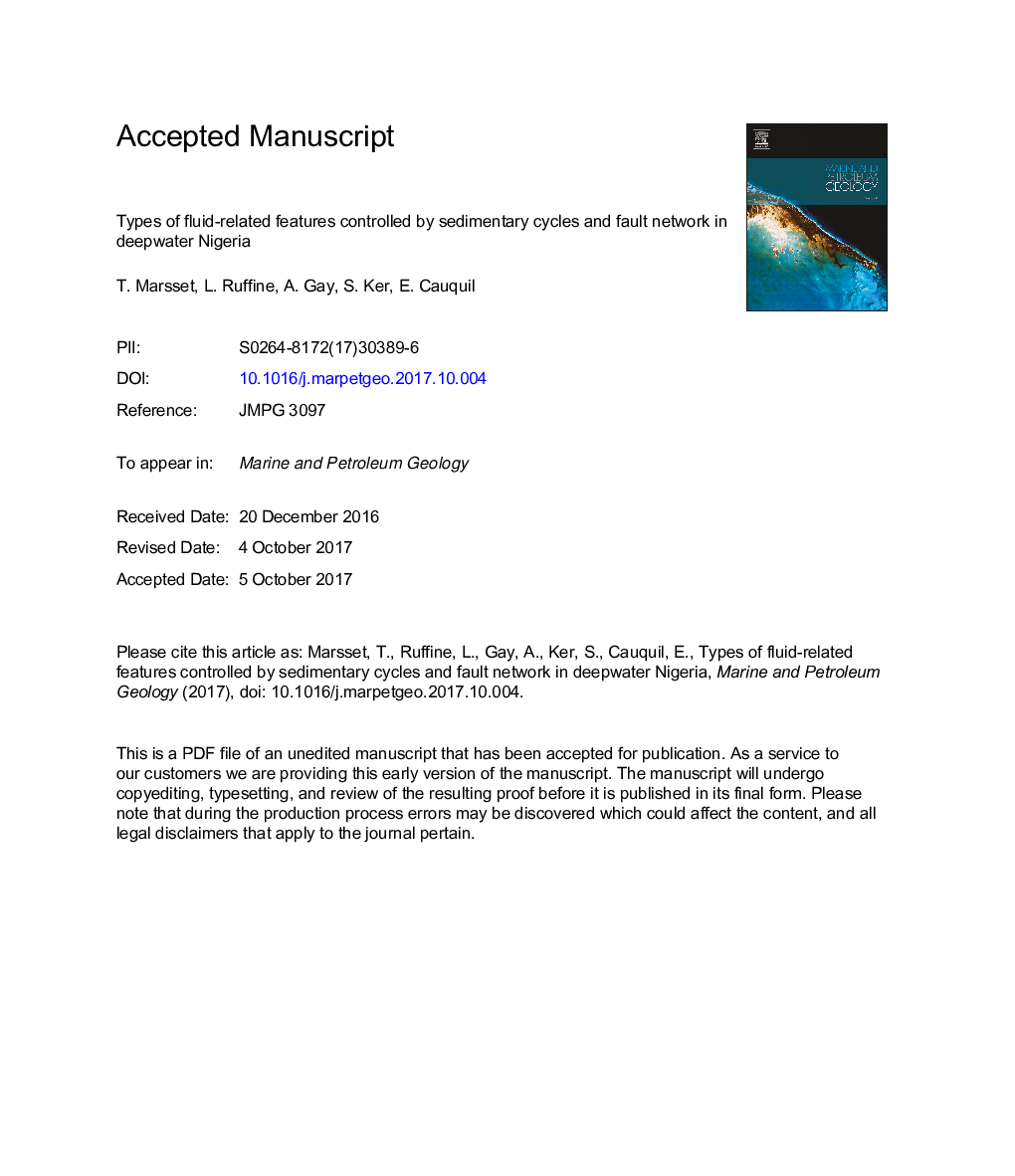| Article ID | Journal | Published Year | Pages | File Type |
|---|---|---|---|---|
| 8909281 | Marine and Petroleum Geology | 2018 | 64 Pages |
Abstract
The results show different types of fluid-related features within the hemipelagic phase of long duration (â¼1 Myr) Turbidite/Hemipelagic cycles. They are the product of the disturbance of the hosting sediments following two main distinct processes: (1) no or low sediment deposition caused by fluid escape associated with seafloor settlement (benthic fauna, carbonate precipitation, gas hydrate formation) and (2) post-depositional erosion, caused either by fluid release (dewatering from underlying features such as channels and upward migration from a deep source) or by collapse (destabilisation of gas hydrates). The temporal evolution reveals a decrease in fluid flow during the hemipelagic deposition as witnessed by the decrease in methanogenic activity and by gas hydrate destabilisation. The spatial distribution of fluid-related features seems to be controlled by the type of fault (small fault or structural lineament).
Related Topics
Physical Sciences and Engineering
Earth and Planetary Sciences
Economic Geology
Authors
T. Marsset, L. Ruffine, A. Gay, S. Ker, E. Cauquil,
